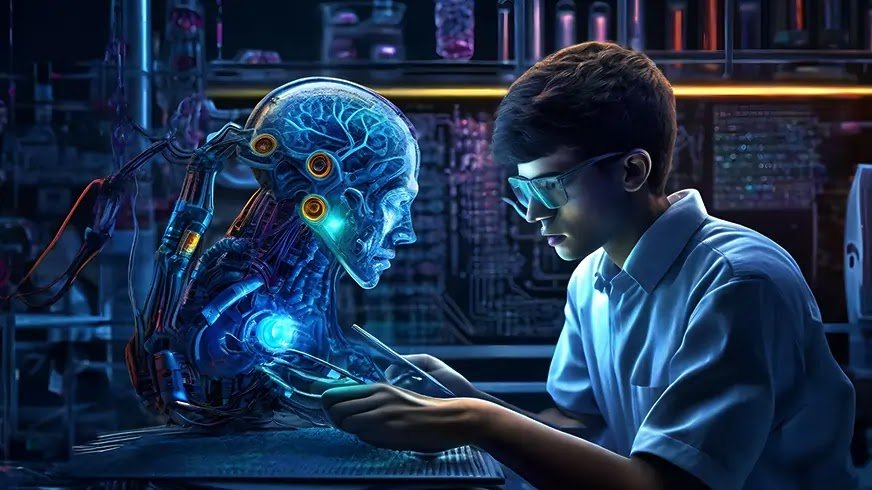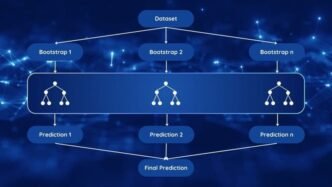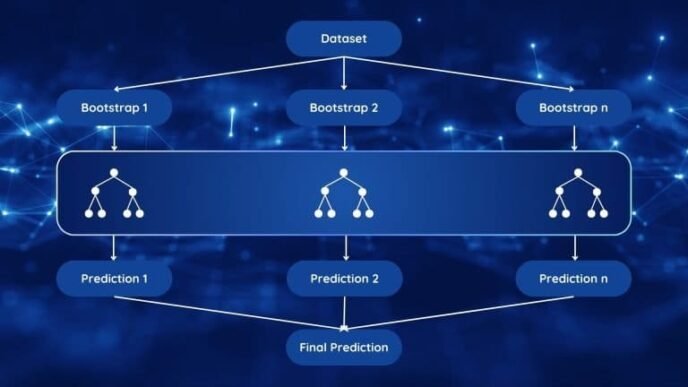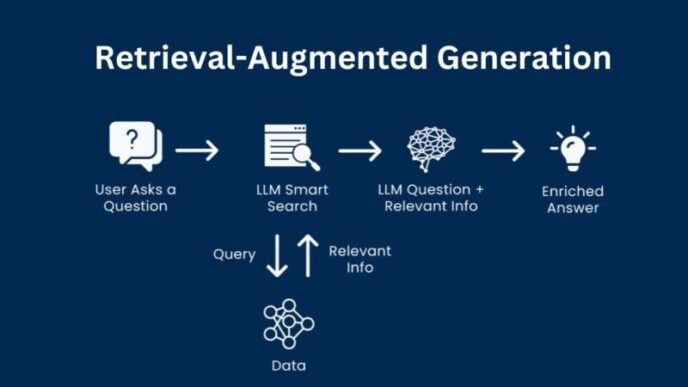Generative AI is reshaping how we create content, from text and images to music and code. Unlike traditional AI, which relies on rule-based algorithms, generative AI models are designed to create new and original outputs by learning from vast datasets. From chatbots like ChatGPT to image generators like DALL-E, generative AI is revolutionizing industries and changing the way we think about technology.
Let’s dive into what generative AI is, how it works, and what it means for the future.
Understanding Generative AI
Defining Generative AI
Generative AI refers to a subset of artificial intelligence designed to create new content. This type of AI can produce text, images, music, and other forms of media. Generative models learn from vast datasets and then generate new outputs that resemble the original data. In simple terms, generative AI doesn’t just replicate data; it creates new data based on patterns it has learned.
Unlike traditional AI, which follows explicit instructions, generative AI models use advanced algorithms like neural networks to understand data patterns. This enables them to produce new and creative outputs that often appear human-made.
How Generative AI Differs from Traditional AI
Traditional AI models are trained to perform specific tasks, such as image recognition or language translation. These models follow a structured, rule-based approach. Generative AI, however, focuses on producing unique content by generating new data rather than simply analyzing existing information.
For more details on the differences between generative and traditional AI, see this guide from MIT Technology Review.
How Does Generative AI Work?
Neural Networks and Deep Learning
Generative AI primarily relies on neural networks, particularly deep learning architectures. These networks mimic the human brain, enabling the AI to recognize complex patterns in data. Generative AI models, such as Generative Adversarial Networks (GANs) and transformers, are popular choices for generating high-quality content.
1. Generative Adversarial Networks (GANs): GANs consist of two neural networks—a generator and a discriminator—that work together to produce realistic outputs. The generator creates content, and the discriminator evaluates it. This back-and-forth process improves the quality of the generated data over time.
2. Transformer Models: Transformers are used in language-based generative AI, such as OpenAI’s GPT series. They excel at understanding and generating text by processing entire sentences and paragraphs, rather than word-by-word. For an in-depth look at how transformer models work, check out this article from OpenAI.
Training on Massive Datasets
To generate realistic content, generative AI models are trained on massive datasets. For instance, text-based models like ChatGPT are trained on a diverse array of written materials. The quality and scope of the training data significantly impact the model’s ability to generate accurate and creative content.
Reinforcement and Fine-Tuning
After initial training, many generative AI models undergo reinforcement learning and fine-tuning. Reinforcement learning helps the model improve by rewarding successful outputs, while fine-tuning adjusts the model’s responses to match specific requirements, such as generating text in a particular tone or style.
Types of Generative AI Applications
Generative AI has a wide range of applications across various industries, including media, healthcare, finance, and more. Here are some prominent uses:
Text Generation
AI models like ChatGPT and Jasper are revolutionizing how we create and interact with text. These models can:
• Answer questions and assist in customer service.
• Generate essays, reports, and stories.
• Create marketing copy and social media content.
Text-based generative AI is beneficial for automating tasks, aiding content creators, and even assisting in language learning.
Image Generation
Generative AI has made significant strides in image creation with tools like DALL-E and Midjourney. These models can:
• Generate realistic or artistic images from textual descriptions.
• Aid in fields like design, marketing, and media.
• Create avatars, digital art, and marketing materials.
For more about AI-generated art, check out this detailed overview on DALL-E from OpenAI.
Music and Audio Creation
Generative AI is now venturing into music and audio generation. Tools like Amper Music and AIVA help users compose original music by:
• Generating background music for videos and presentations.
• Assisting musicians in the creative process.
• Producing soundscapes and audio effects.
Coding and Software Development
Generative AI tools like GitHub Copilot can assist in coding by generating lines of code based on prompts. These tools are transforming software development by:
• Increasing productivity for developers.
• Reducing errors in coding.
• Automating repetitive programming tasks.
Healthcare and Drug Discovery
In healthcare, generative AI has the potential to aid in drug discovery by predicting molecular structures and interactions. This can:
• Accelerate the development of new treatments.
• Reduce the costs of drug research.
• Aid in personalized medicine and treatment plans.
Benefits of Generative AI
Enhancing Productivity
Generative AI can automate repetitive tasks, enabling professionals to focus on higher-value work. For example, AI tools can quickly generate marketing copy, freeing up time for strategic planning.
Driving Innovation
In fields like design, healthcare, and media, generative AI is pushing the boundaries of creativity and innovation. It enables users to explore new ideas, designs, and solutions that might not be possible otherwise.
Accessibility
Generative AI democratizes content creation by making complex tasks more accessible. Whether it’s creating art, writing, or coding, AI-powered tools make it easier for people without specialized skills to generate professional-quality content.
Personalization
Generative AI allows for highly personalized content. For instance, AI can generate customized customer responses or tailor marketing messages based on user data, enhancing the user experience.
Challenges and Ethical Concerns
Data Privacy
Generative AI models require vast amounts of data for training, often raising concerns about data privacy. The use of publicly available data without explicit consent has sparked discussions about the ethical implications of generative AI.
Copyright and Intellectual Property
As generative AI creates new content, questions around ownership and copyright arise. For example, who owns the rights to AI-generated art or text? This issue is especially complex in industries like entertainment, where copyright is crucial.
Deepfakes and Misinformation
Generative AI has been used to create realistic deepfakes and misinformation. AI can generate convincing but false images, videos, and articles, posing challenges for media credibility and public trust.
For more on ethical issues surrounding generative AI, see this report from Stanford University’s Human-Centered AI Initiative.
Bias and Fairness
Generative AI models can inadvertently learn biases present in their training data, leading to biased outputs. Addressing and mitigating these biases is crucial to ensure fairness and inclusivity in AI-generated content.
The Future of Generative AI
Generative AI is still evolving, and its potential continues to grow. Here are some trends and predictions for the future:
1. Improved Accuracy: As models become more advanced, their outputs will become even more accurate, creative, and contextually appropriate.
2. Enhanced Ethical Safeguards: With growing concerns about misinformation and privacy, there will likely be stronger regulatory frameworks to govern AI use.
3. Hybrid AI Models: In the future, generative AI may work alongside other AI types, such as predictive models, to create hybrid solutions that are both creative and data-driven.
4. Broader Accessibility: As generative AI tools become more user-friendly, we can expect to see more widespread use across professions and industries.
For further reading on the future implications of generative AI, you can refer to this study by the McKinsey Global Institute.
Conclusion
Generative AI is a groundbreaking technology that’s reshaping the way we create, interact, and innovate. From generating text and images to composing music and assisting in scientific research, generative AI opens up new possibilities across diverse fields. However, with its potential also come challenges and ethical considerations that must be addressed as we integrate generative AI into society.
As technology advances, understanding what generative AI is and how it works will become increasingly important. With responsible development and usage, generative AI can continue to be a powerful tool for creativity and productivity in the years to come.











